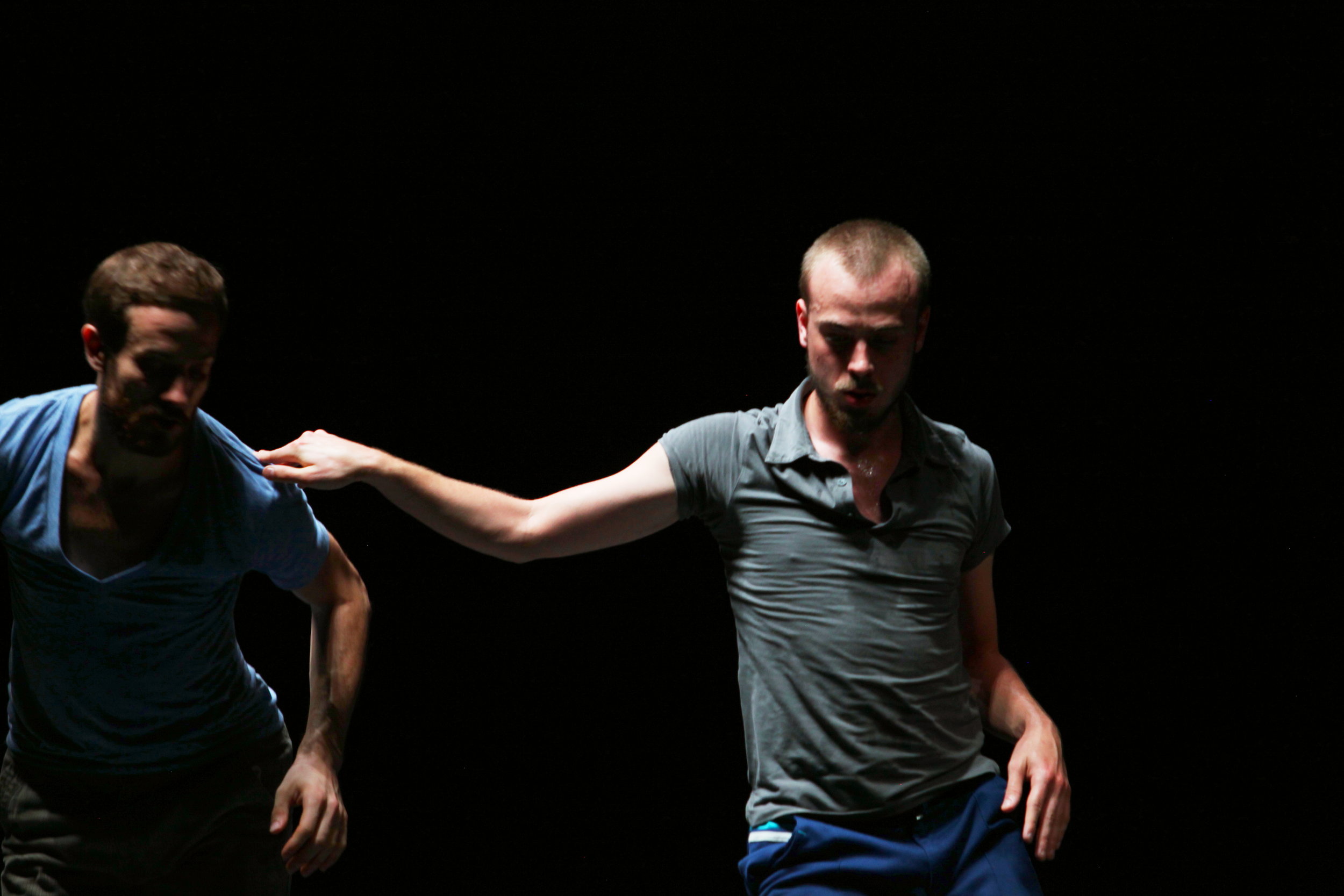Four pieces by Emanuel Gat
These four short pieces are all a continuation of themes and ideas explored in “Brilliant Corners”, the company's production from 2011. All four are a sort of zoom-in into different aspects of choreography making, and as a consequence, a reflection on performance modalities.
Étude (study), refers to the musical origins of the term – a composition, usually short and of considerable difficulty, designed to provide practice material for perfecting a particular musical skill. A choreographic take-off on the idea of étude, these four pieces offer a close look into the mechanics and heart of choreography making.
Driven by an inherent wish to contextualize dance and choreography by actively engaging with the spaces laying between audience and performance, “Corner Etudes” looks at questions relating to spectatorship, the choreographic reality, and how the embodied and phenomenological moment of dancing is experienced.
It explores themes such as the intellectual inquiry for an “answer” through interpretations and speculation on meaning, within the context of the actual experience of the performative moment. The first three pieces of the program will be performed with audience and dancers sharing the same space, leaving the audience mobile and extremely close to the unfolding dance.
In that sense, this set of etudes is thought of as a contemplation tool both for performers and audiences, with at its center the notion of neither to force nor to find an answer, but to give oneself wholeheartedly to the act of questioning. An immediate wonderment with the moment as it happens.
A to F
Choreography created in collaboration and performed by: Hervé Chaussard, Michael Löhr, Pansun Kim, Philippe Mesia, Geneviève Osborne, François Przybylski, Milena Twiehaus.
"A to F" is the work title of the culminating scene from Brilliant Corners. A chaotic yet precisely choreographed section, built through a mechanism of extreme co-dependence and interrelation between the dancers. A kinetic structure with organic qualities and a seamless stream of un-predictable yet coherent patterns with a built-in dramaturgic urgency.
This new 'étude' is following the same process of creation, which in this context allows for a new accuracy and for a sense of "language" to emerge. An experimentation with the construction laws and how they govern every moving and living system, from choreography to social organization.
An almost graphic visualization of human connections, A to F is a transposition of social relations into chorographic form. It behaves as a sort of map of the web-like stream of information flowing constantly between people.
Duet
Choreography created in collaboration and performed by: Hervé Chaussard, Philippe Mesia, Genevieve Osborn and Milena Twiehaus
Choreography assistant and rehearsal director: Rindra Rasoaveloson
Sixty minutes of dance condensed both in time and space, duplicated into two distinct duets collapsing into one another, to create a conversation of visceral dynamic and energy between four dancers. Through the drastic negation of the spatial aspects of the original material, its time-related information and qualities are pushed to the front. An intimate and meticulously articulate conversation between two women and two men
Quartet
Choreography created in collaboration and performed by: Francois Przybylski and Michael Lhor
Text: T.S. Elliot, Four Quartets.
Music: Léon
With the drawing of this Love and the voice of this Calling, we shall not cease from exploration, And the end of all our exploring, Will be to arrive where we started, And know the place for the first time.
"Quartet" is a study on multilayered counterpoint. Four independent lines, merging movement and speech, are interweaved by the two performers into a rich and playful game of structuring, balancing, chasing, confronting, echoing, mirroring, fleeing, answering and questioning, a constant balancing-act between organizing and improvising.
Excerpts from T.S. Elliot contemplative poem, highly contrapuntal in-itself, are crashed onto the choreography, to create a “new” reassembled version of the text, rimed live by the dancers and carefully positioned in the context of the dance. The emanation of content and meaning from the spoken texts collides naturally with the openness of the physical proposition generated by the dance, bringing forth a vibrant flow of aural and visual information.
The Surprising Complexity Of Simple Pleasures
Choreography created in collaboration and performed by: Hervé Chaussard, Amala Dianor, Aurore Di Bianco, Michael Löhr, Pansun Kim, Philippe Mesia, Geneviève Osborne, François Przybylski, Milena Twiehaus.
Organized complexity, visual and musical in this case, and its resonance as pleasurable.
The surprising manner in which complex systems and structures, be it physical or mental, concrete or abstract, animate or inanimate, generate a simple sense of rightness.
The aim here is not to delight the eye or ear, but rather to allow the person looking, contemplating the work, to see the meaning of the structure as structure regardless of the content one might impose upon it. A baroque architecture of endless details and references, all merging into a coherent simple ONE.
As part of the wish to explore new ways of relating the artistic process to its audience, “The surprising complexity of simple pleasures”, will be fully created with audience present from the very first studio rehearsal all the way to the on-stage technical rehearsals. The audience will be able to follow closely the process of making a new choreography, and through a continued dialog with the artists have the possibility to comment, question and reflect.
This format of constant public/artists relation throughout the process will not end once the piece is premiered. Since the approach is to look at choreography as an evolving entity rather than a fixated product, when toured later on, the work will always be rehearsed publicly at every new theatre it’s being presented at. The process of adapting, doubting, changing and evolving will continue to be exposed and shared with the audience throughout the piece’s life.
Production: Emanuel Gat Dance Company
Coproduction: Festival Montpellier Danse 2013
With the support of: de Singel International Art Campus (Antwerp) and Fondation BNP Paribas
Stage & lights designs: Emanuel Gat in collaboration with Samson Milcent and Guillaume Février
Sound design: Emanuel Gat in collaboration with Frederic Duru
